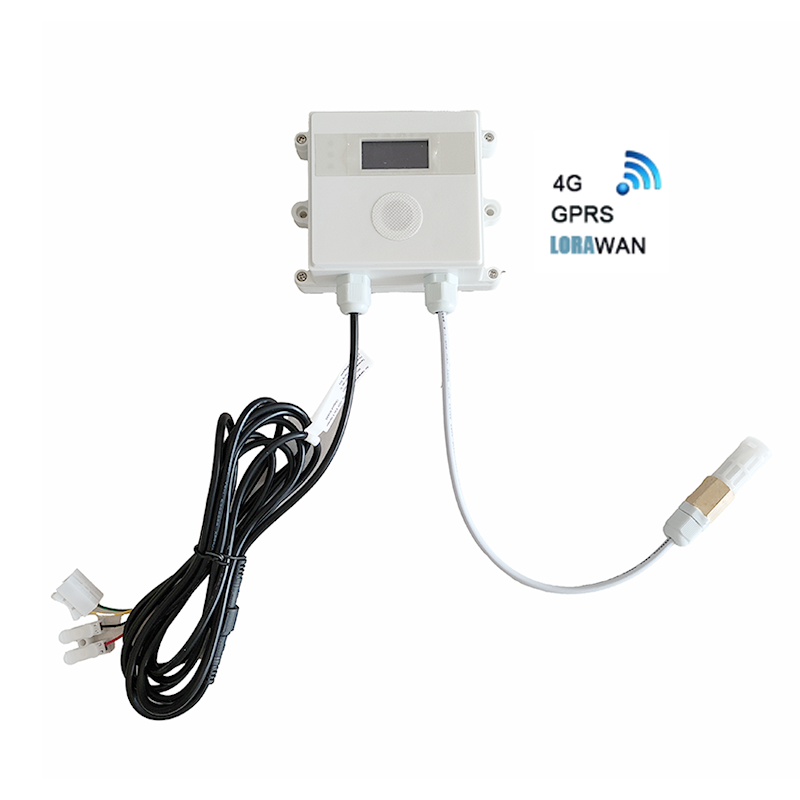Case 1: Livestock and Poultry Farms – Ammonia (NH₃) and Carbon Dioxide (CO₂) Monitoring
Background:
The scale of livestock and poultry farming (e.g., piggeries, chicken farms) in the Philippines is expanding. High-density farming leads to the accumulation of harmful gases inside barns, primarily Ammonia (NH₃) from the decomposition of animal waste and Carbon Dioxide (CO₂) from animal respiration.
- Ammonia (NH₃): High concentrations irritate the animals’ respiratory tracts, leading to reduced immunity, slower weight gain, and increased susceptibility to disease.
- Carbon Dioxide (CO₂): Excessive concentrations can cause lethargy, loss of appetite, and in severe cases, asphyxiation.
Application Case: A Large-Scale Pig Farm in the Calabarzon Region
- Technical Solution: Ammonia sensors and carbon dioxide sensors are installed inside the pig pens, connected to the ventilation system and a central control platform.
- Application Process:
- Real-time Monitoring: Sensors continuously track NH₃ and CO₂ levels.
- Automatic Control: When gas concentrations exceed preset safety thresholds, the system automatically activates exhaust fans to introduce fresh air until levels normalize.
- Data Logging: All data is recorded and reports are generated, helping farm owners analyze trends and optimize management practices.
- Value:
- Animal Welfare & Health: Significantly reduces the incidence of respiratory diseases, improving survival rates and growth efficiency.
- Energy Savings & Cost Reduction: Demand-based ventilation saves substantial energy costs compared to running fans 24/7.
- Increased Production: Healthier animals mean better feed conversion ratios and higher-quality meat.
Case 2: Greenhouses & Vertical Farming – Carbon Dioxide (CO₂) Fertilization and Ethylene (C₂H₄) Monitoring
Background:
In Controlled Environment Agriculture (CEA), such as greenhouses and high-tech vertical farms, gas management is a core component.
- Carbon Dioxide (CO₂): This is a raw material for photosynthesis. In enclosed greenhouses, CO₂ levels can drop rapidly during periods of intense sunlight, becoming a limiting factor. Supplementing CO₂ (known as “CO₂ fertilization”) can dramatically increase the yield of vegetables and flowers.
- Ethylene (C₂H₄): This is a plant ripening hormone. During post-harvest storage, even trace amounts can cause premature ripening, softening, and spoilage of fruits and vegetables.
Application Case: A Vegetable Greenhouse in Benguet Province
- Technical Solution: CO₂ sensors are deployed inside greenhouses growing tomatoes or lettuce, linked to a CO₂ cylinder release system. Ethylene sensors are installed in storage warehouses.
- Application Process:
- Precise Fertilization: The CO₂ sensor monitors levels. When light is sufficient (determined by a light sensor) but CO₂ is below optimal levels (e.g., 800-1000 ppm), the system automatically releases CO₂ to maximize photosynthetic efficiency.
- Freshness Warning: In storage, if the ethylene sensor detects a rise in concentration, it triggers an alarm, alerting staff to check for and remove spoiling produce, preventing the spread of spoilage.
- Value:
- Increased Yield & Efficiency: CO₂ fertilization can boost crop yields by 20-30%.
- Reduced Waste: Early ethylene detection significantly extends the shelf life of produce, reducing post-harvest losses.
Case 3: Grain Storage & Processing – Phosphine (PH₃) Monitoring
Background:
The Philippines is a rice-producing country, making grain storage critical. To prevent pest infestation, fumigants are commonly used in silos. The most common is aluminium phosphide tablets, which release highly toxic Phosphine (PH₃) gas upon contact with air. This poses a severe safety risk to workers performing fumigation or entering the silos.
Application Case: A Central Grain Silo in Nueva Ecija Province
- Technical Solution: Workers use portable phosphine (PH₃) gas detectors before entering silos. Fixed PH₃ sensors are also installed for long-term environmental monitoring.
- Application Process:
- Safe Entry: A portable detector must be used to check PH₃ levels before entering any confined space; entry is only permitted if concentrations are safe.
- Continuous Monitoring: Fixed sensors provide 24/7 surveillance. If a leak or abnormal concentration is detected, immediate audio-visual alarms are triggered to evacuate personnel.
- Value:
- Life Safety: This is the primary value, preventing fatal poisoning accidents.
- Regulatory Compliance: Helps meet occupational health and safety standards.
Summary and Challenges
Summary:
The core application of gas sensors in Philippine agriculture is the ”precise” and ”automated” management of the environment to:
- Optimize growth conditions to improve yield and quality of plants and animals.
- Prevent disease and loss, reducing operational risks.
- Ensure safety for personnel and protect assets.
Challenges:
Similar to water quality sensors, widespread adoption in the Philippines faces hurdles:
- Cost: High-performance sensors and integrated automation systems represent a significant investment for smallholder farmers.
- Technical Knowledge: Users require training for proper calibration, maintenance, and data interpretation.
- Infrastructure: Reliable electricity and internet are prerequisites for robust IoT system operation.
- Complete set of servers and software wireless module, supports RS485 GPRS /4g/WIFI/LORA/LORAWAN
For more Gas sensor information,
please contact Honde Technology Co., LTD.
Email: info@hondetech.com
- Company website: www.hondetechco.com
- Tel: +86-15210548582
Post time: Sep-26-2025


